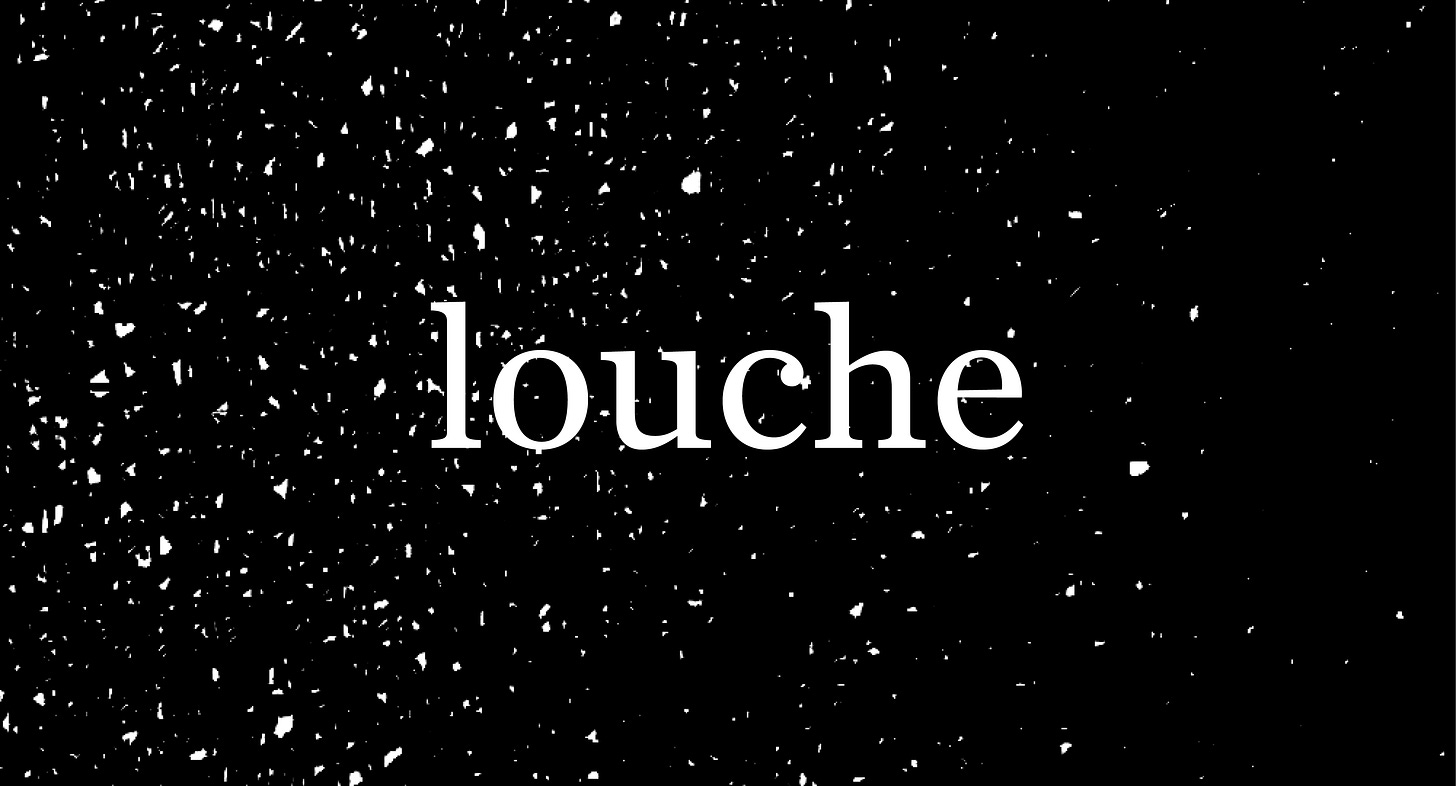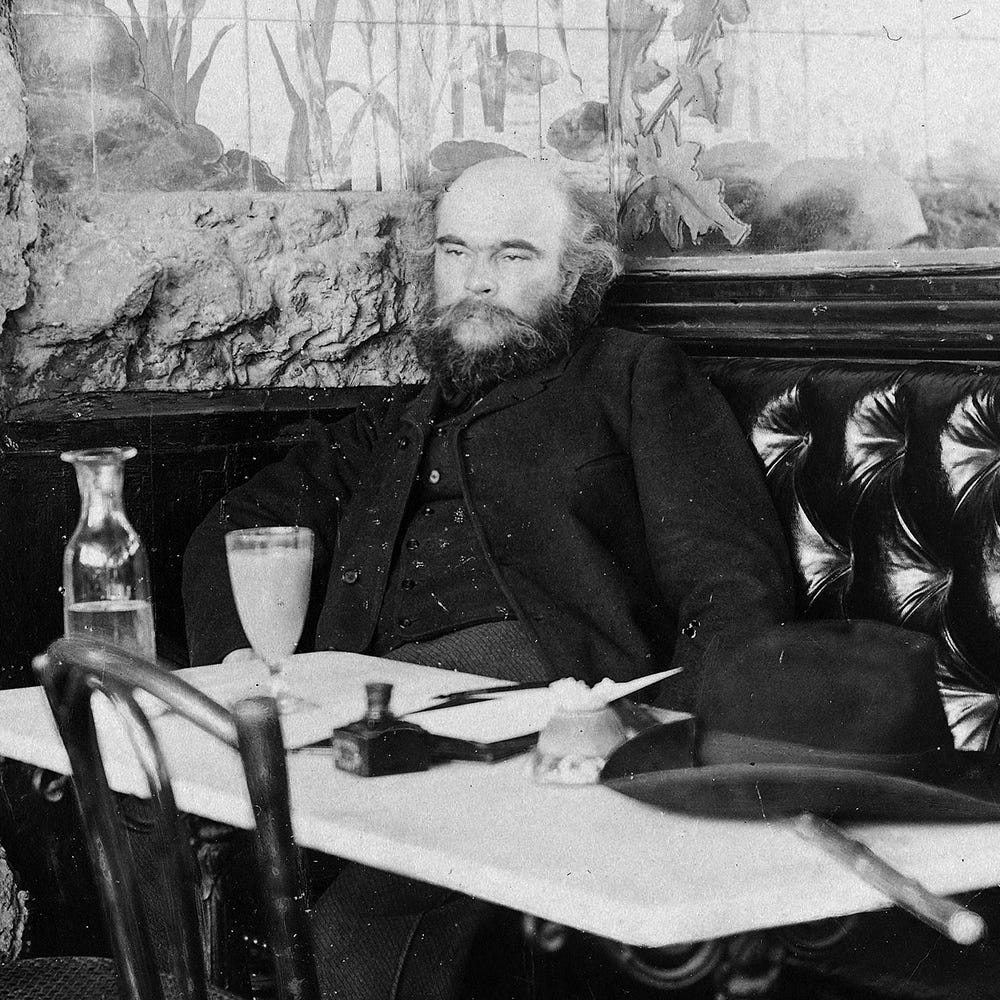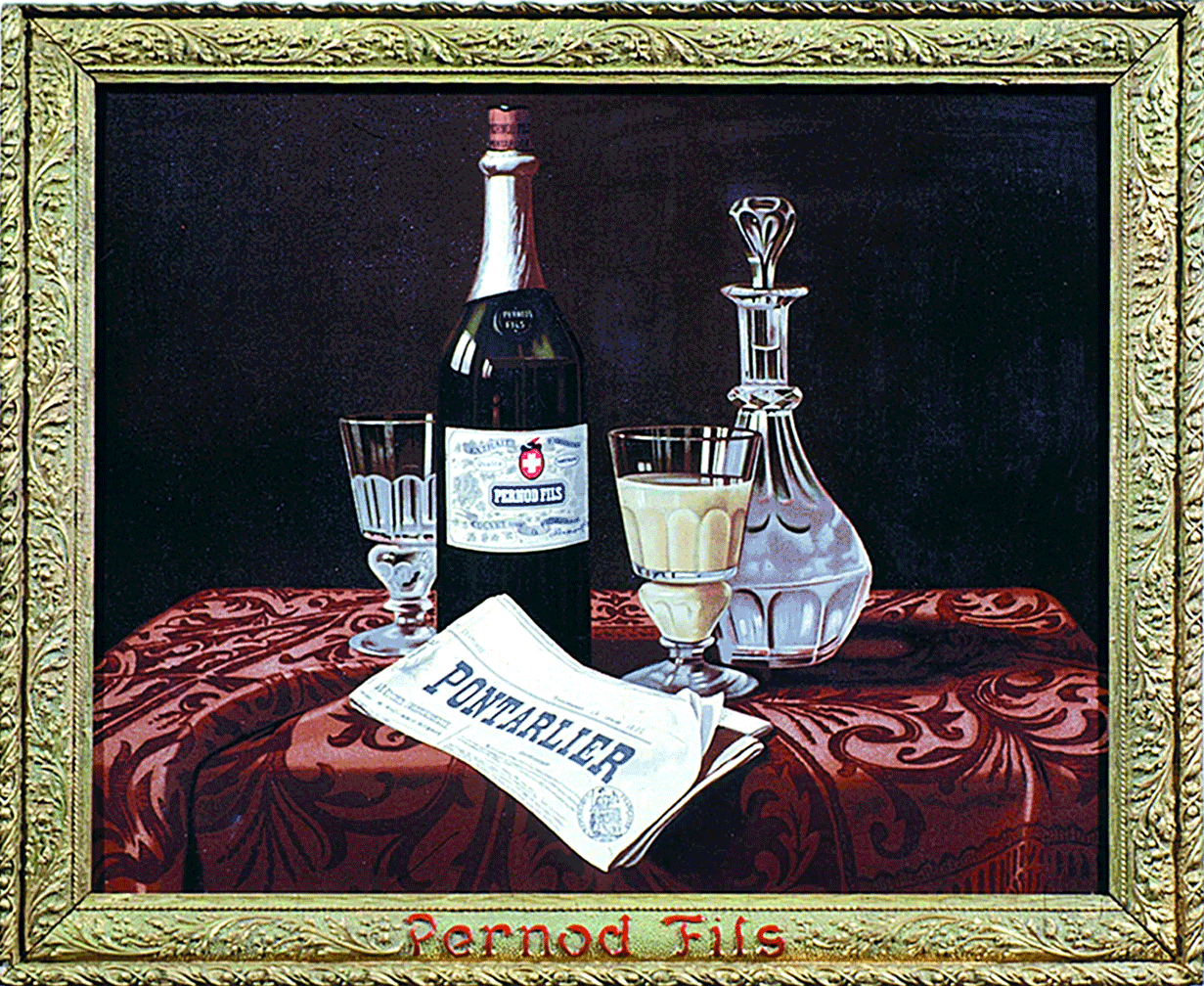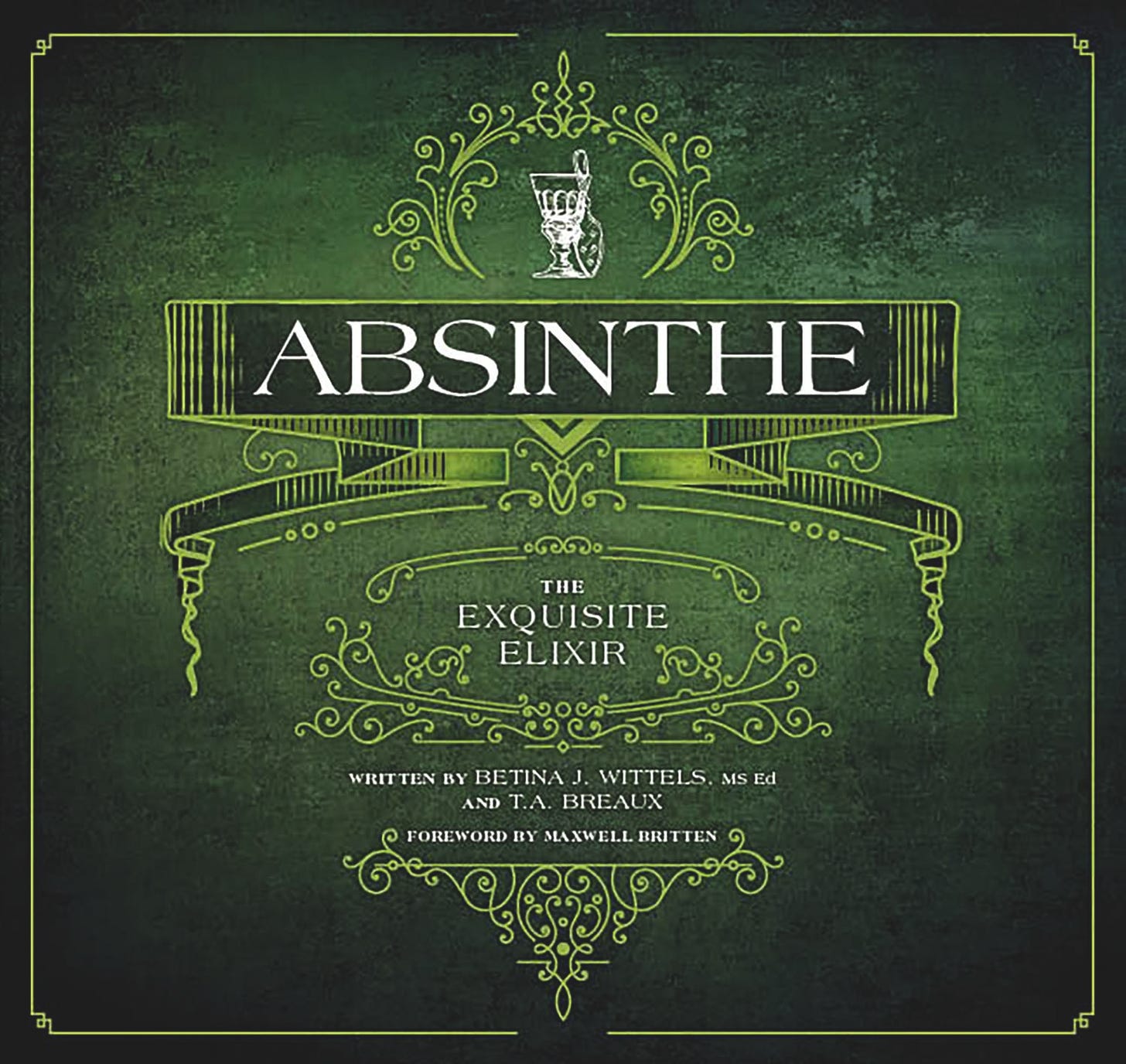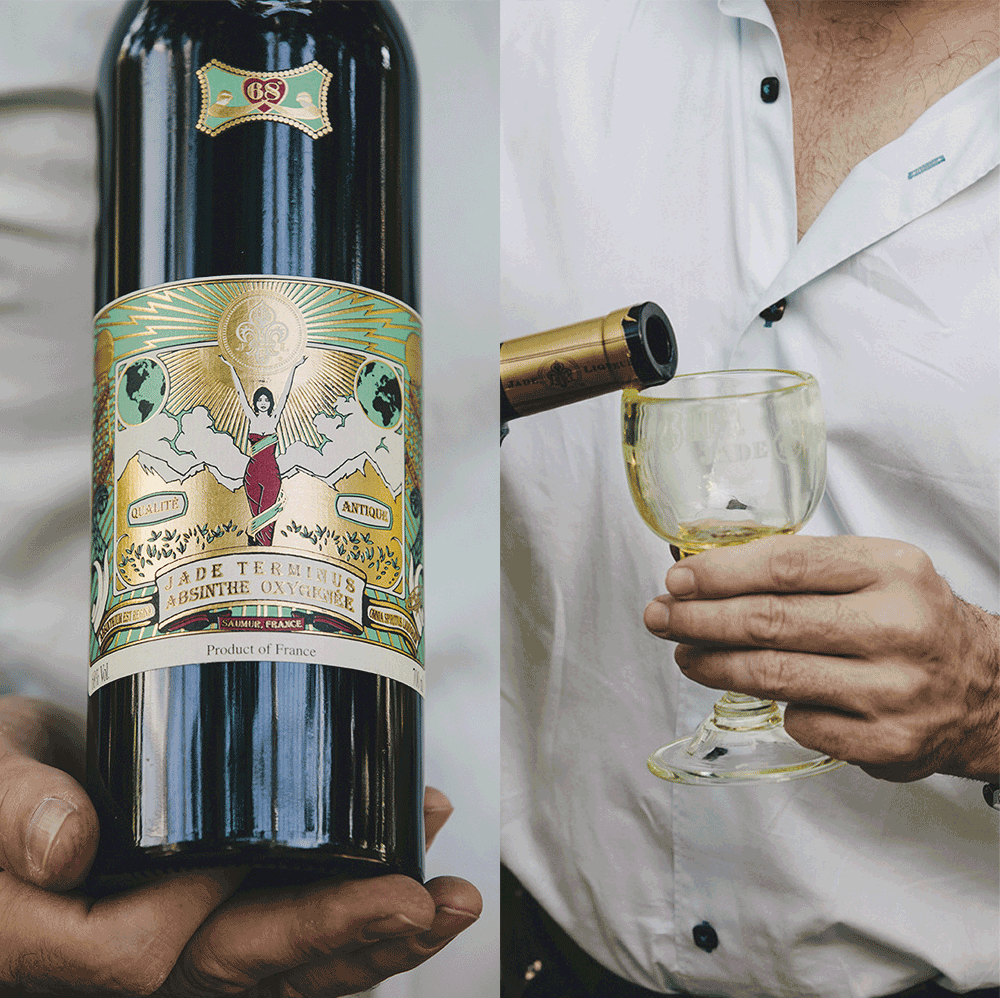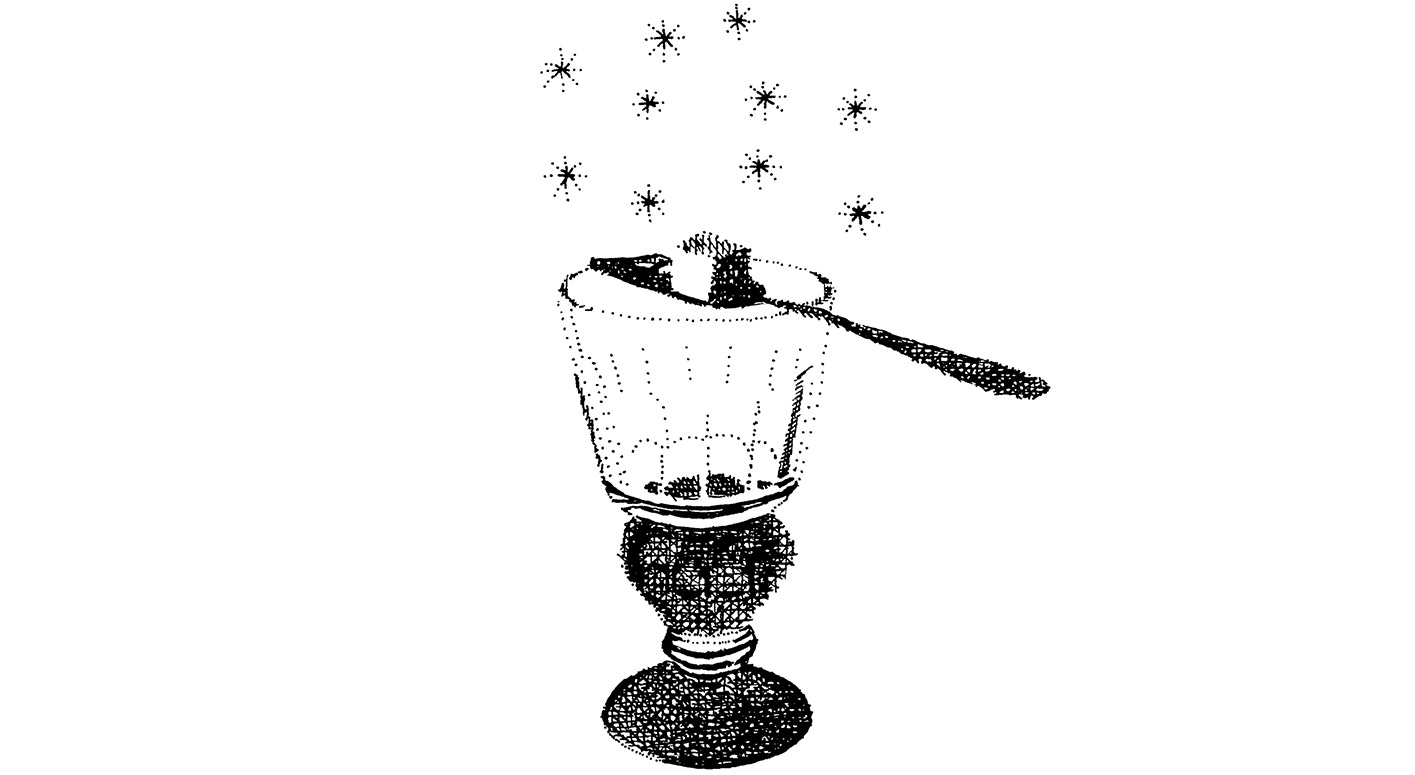
Here are five decadent things worth sharing:
Word of the Week
louche
ˈlüsh
(adjective)
a. Of questionable taste or morality; decadent
b. Not reputable or decent
c. Unconventional and slightly disreputable in an attractive manner; raffish, rakish
Why do we remember the witty and glamorous Wilde, and forget the Machiavellian and louche Bosie?
(noun)
d. A dubious or disreputable person or thing
(verb)
e. To make (an alcoholic beverage, e.g. absinthe or ouzo) cloudy by mixing it with water, due to the presence of anethole. This is known as the ouzo effect.
Absinthe has developed a mystique based on the exotic appearance of louching.Speaking of absinthe’s louche, the author most associated with absinthe is Symbolist poet Paul Verlaine (1844–96). Despite his alcoholism, he published dozens of poetry collections during his lifetime, and is considered a major French poet. His first collection of poetry was published when he was twenty-two.
Verlaine is inextricably linked with fellow poet and lover Arthur Rimbaud, who wrote Verlaine a letter in September 1871 when the boy was sixteen and the poet was twenty-seven. Rimbaud came to Paris and the two had a tumultuous relationship (the age of consent in France at the time was thirteen), ending in Verlaine’s imprisonment after shooting the teenager in the wrist. Verlaine’s work is available free on gutenberg.org. Here is “Langueur” (1880):
Langueur
I am the Empire at the end of the Decadence,
That sees the tall, fair-haired Barbarians pass,—the while
Composing indolent acrostics, in a style
Of gold, with languid sunshine dancing in each line.
The lonely soul is heart-sick with a dense ennui.
Down yon, they say, war's torches bloody shine.
Alas, to be so faint of will, one must resign
The chance of brave adventure in the splendid file,—
Of death, perchance! Alas, so lagging in desire!
Ah! All is drunk! Bathyllus, hast done laughing, pray?
Ah! All is drunk,—all eaten! Nothing more to say!
Alone, a vapid verse one tosses in the fire;
Alone, a somewhat thievish slave neglecting one;
Alone, a vague disgust of all beneath the sun!Absinthe is closely linked with literature of the late nineteenth century. Besides Paul Verlaine, authors Arthur Rimbaud, Charles Baudelaire, Guy de Maupassant, Émile Zola, Alfred Jarry, and Oscar Wilde were famous absinthe drinkers. It has a high alcohol content and licorice flavor.
Nicknamed la fée verte (the green fairy) in advertisements of the time, absinthe became popular in France because of a wine-crop infestation. According to Livia Gershon in “The Trouble with Absinthe,” “Absinthe was appealing not just for its low price but because of the ritual attached to it: slowly pouring cold water over a sugar cube into the glass, transforming the aperitif from a bright yellowish green to a cloudy white.”
Despite its reputation, absinthe is not hallucinatory or toxic. One of the major ingredients of absinthe is the plant wormwood, which contains thujone, a chemical that can cause seizures. Because of this, there was a widespread belief that wormwood caused madness in absinthe drinkers, which led to its 1915 ban in France and decline in popularity. But even before the French government banned absinthe, the amount of wormwood it contained was too low to cause much effect beyond a green color and an herbaceous flavor. According to Thrillist, “All wormwood does to absinthe is add aromatics and flavor. There isn’t enough wormwood or thujone in absinthe to cause seizures or other negative health effects.” France lifted its ban in 2011.Pernod is the classic absinthe, which began distilling in France in 1805.
According to Difford’s Guide, “The story of Pernod starts in 1789 when Dr. Pierre Ordinaire, a retired French physician living in Switzerland blended alcohol with fifteen herbs including wormwood oil to create an elixir, which he called absinthe.”
The company adjusted the recipe after France’s 1915 absinthe ban, rebranding it as anise liqueur in 1926. In 2001, Pernod began making a widely available absinthe, called “Pernod Absinthe Supérieure.” Its current high-quality iteration hews closely to its original 1880s recipe.But for a rare absinthe experience, try those of Jade Liqueurs. Founded by author and scientist T.A. Breaux, his absinthes receive some of the highest ratings on Wine Advocate. To learn more about the green fairy, read Breaux’s Absinthe: The Exquisite Elixir.
Jade Liqueurs’s latest (and purportedly final) creation is the intense and creamy Terminus Oxygénée Absinthe Supérieure, which features “lovely aromatics and a lengthy, stimulating herbal aftertaste.” It features a luxurious, foil-printed, Art Nouveau-style label.
Thank you for reading!Louchely,
Rachilde & Co.



